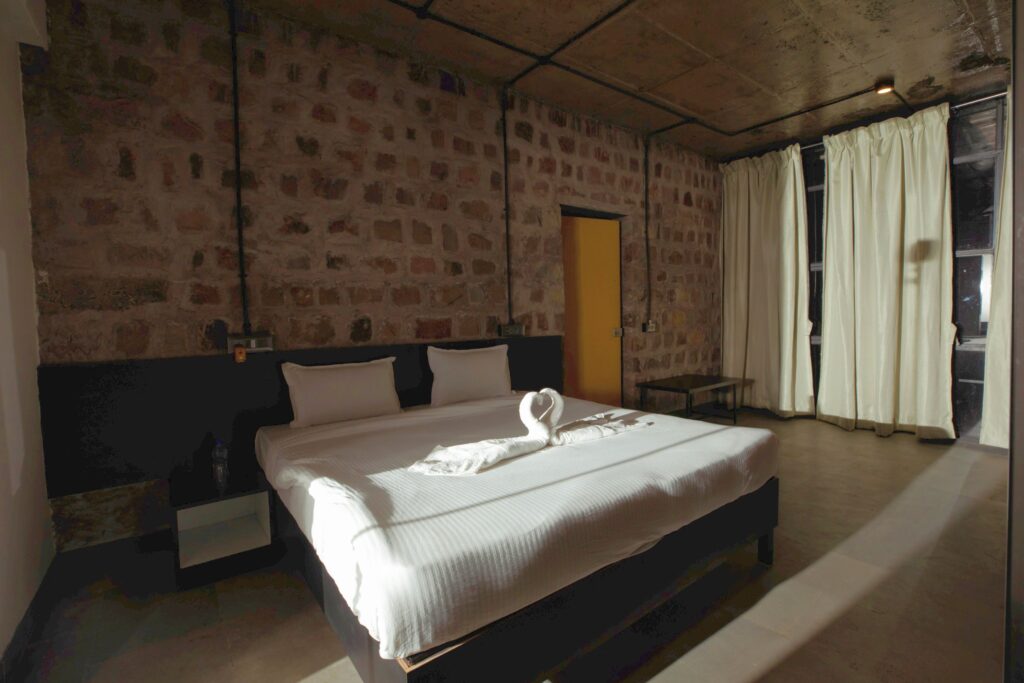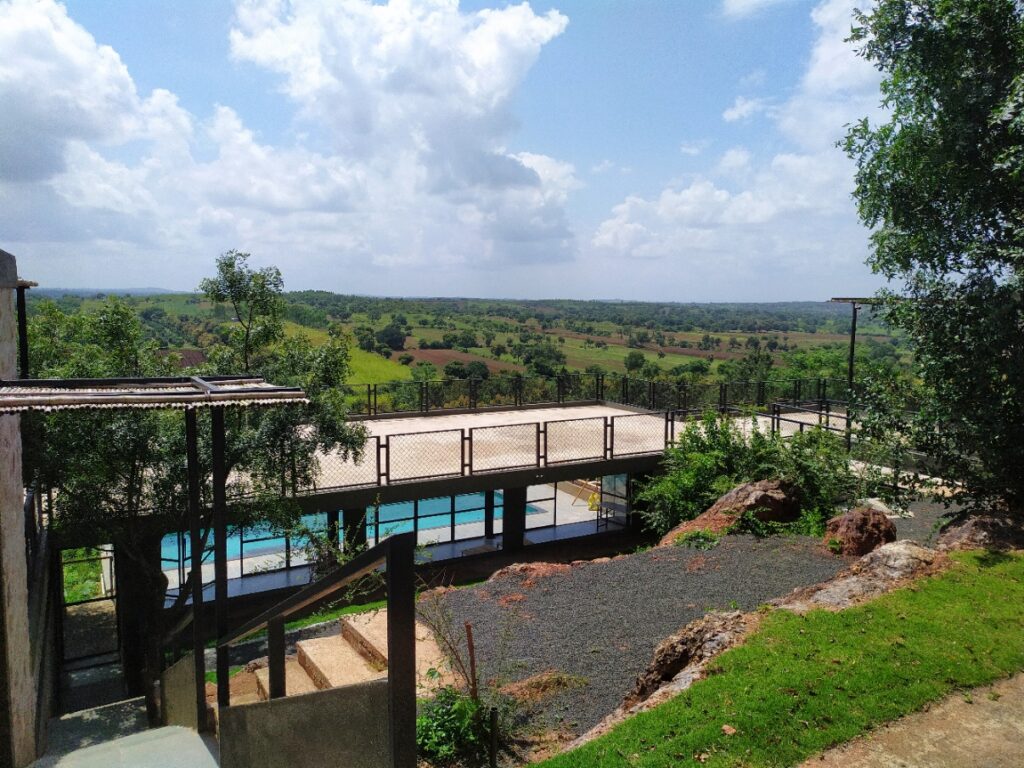
Context
The site is located in a small village, Belavadi, near Bailhongal Taluka of Belgaum district. It’s a 100-acre farm with fruit plantations. The client wanted a farmhouse built here to enjoy their stay, as well as to host their family and friends.
The site is highly contoured. Enso Design chose it as the farmhouse’s site as it gave unending vistas of the green farmlands on the western side, along with a view of the sunset.
Response to the Context
Since the site was contoured, the design was conceived to use these natural sloped levels and create living spaces in such a way that every living space had a view of the unending farmlands.
The main entry was tucked in the northeast corner with a small porch for a car and then a sit-out / verandah, before entering the home. The entry to the farmhouse was through a wide door. Once entering the foyer, the living and dining space opens into open courtyards/sit out’s on either side.


The eastern courtyard was for the owners to enjoy the morning sun and become an extension of living and dining spaces. A kitchen was tucked in the southeast corner of the house (Vaastu reasons) with an attached utility, having access from outside for the maid’s entry and exit.

The western courtyard is much larger in size and volume and is accessible from the living and dining areas. At this point, one gets only a glimpse of the vast green expanse of the farm and the other unending farm fields.
Two flights of steps (one on the north and the other on the south) lead down, by a metre and a half, to the first set of Bedrooms. The central courtyard also becomes accessible from this level. The bedrooms are large and spacious, having large sit-out terraces overlooking the western green expanse. Even the toilets at this level get a view of the green expanse.


These two flights of steps continue further down by 3.0 metres and open to the recreational area. At this level, two more bedrooms are located, with their own private courtyards overlooking the green expanse. The spacious rooms with attached toilets overlook the green expanse.
The recreational area is used to host parties and functions along with indoor games. This further opens down to a private pool on the west overlooking the green expanse.
Looking towards the living from the recreational area, the entire house opens up through the central courtyard. This courtyard had some rocky outcrops and neem trees from the beginning, which have been retained and a very minimalistic and simple landscape is done using some gravel and lawn. It is kept as rustic as possible. The neem trees have grown and have increased in numbers at all levels of the house. Hence the name Neem House (Bevina Mane in Kannada).
Overall, a sincere attempt has been made to carve out a space on the contoured site without disturbing much of the natural features of the site. And as the saying goes- A great space cannot be captured in photographs but needs to be experienced in person to get the real vibes of that particular space.
Materials used
- Most of the materials used have been sourced locally from the existing site or nearby places for the exposed stone masonry walls, foundations and landscape etc.
- At places where the earth was to be retained, RCC walls have been used.
- Flooring is mainly a combination of rough and polished Kota.
- The roof for the bedrooms and recreational spaces is done as an RCC slab and for the living MS truss work with sheet roofing to cut down the cost.
- The entry to the bedroom and the sit-outs of the living and bedrooms are covered using Bamboo sticks as protection from heat and rain.
- The interiors too have been kept to the bare minimum, to ensure the spaces get highlighted rather than the materials themselves.






Special Features
- Use of natural Existing Terrain ( Slopes )
- Retaining existing rocky outcrops and greenery
- Use of Locally available materials
- Spaces and levels planned to maximise the unending green vistas of the agricultural farms
- Rustic feel
- The building is designed as a part of the landscape- complementing it and not overpowering it.
Images






















